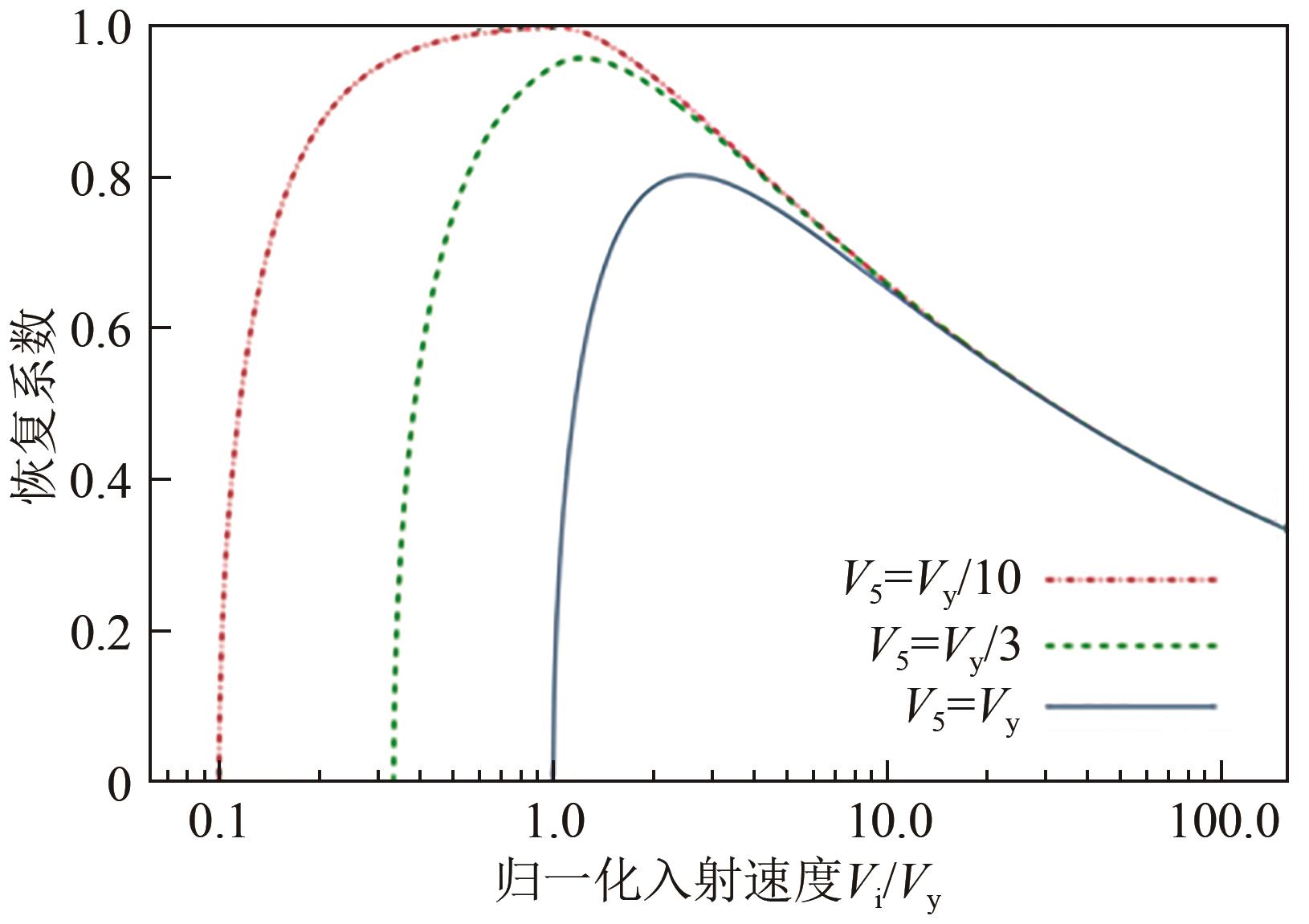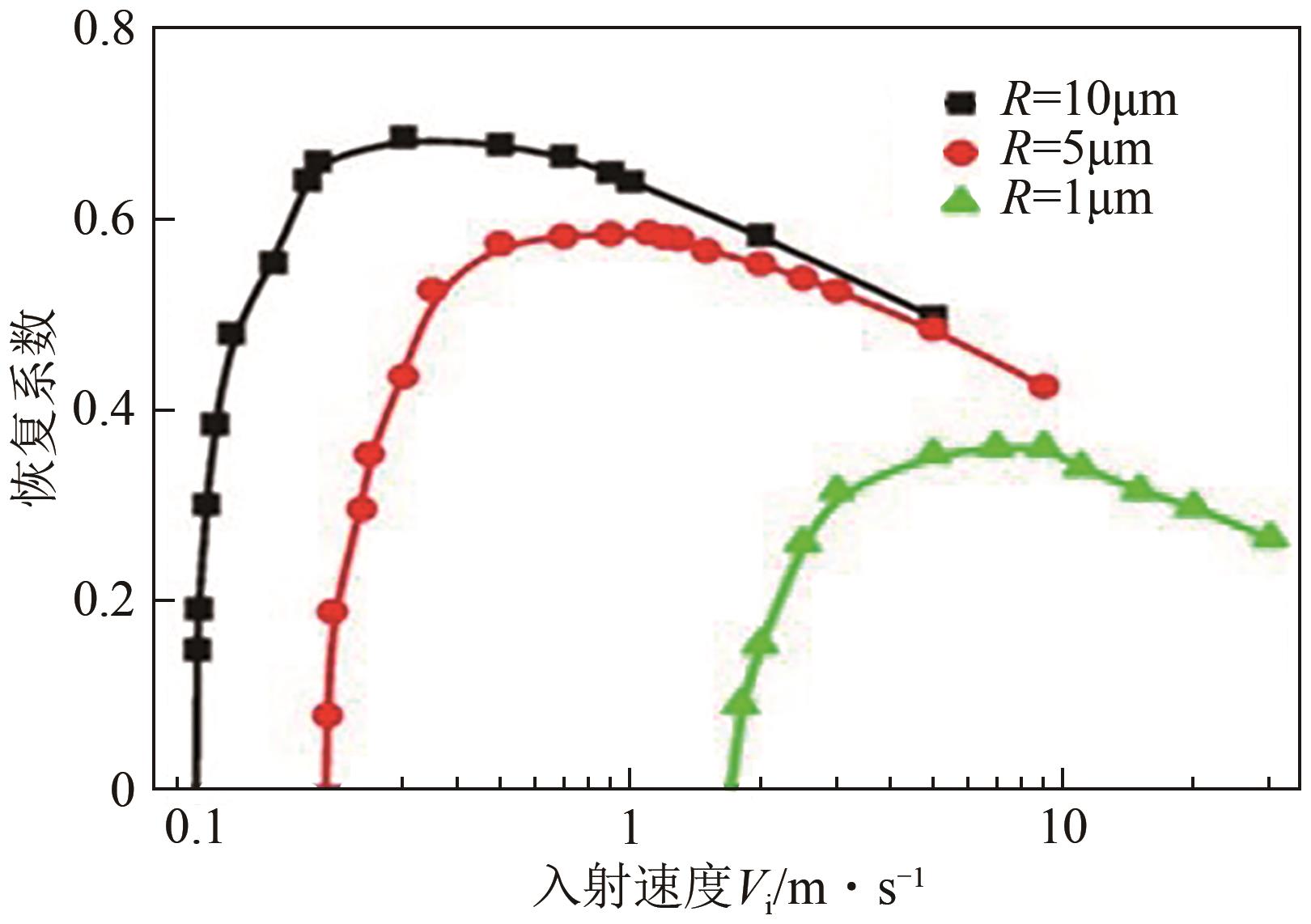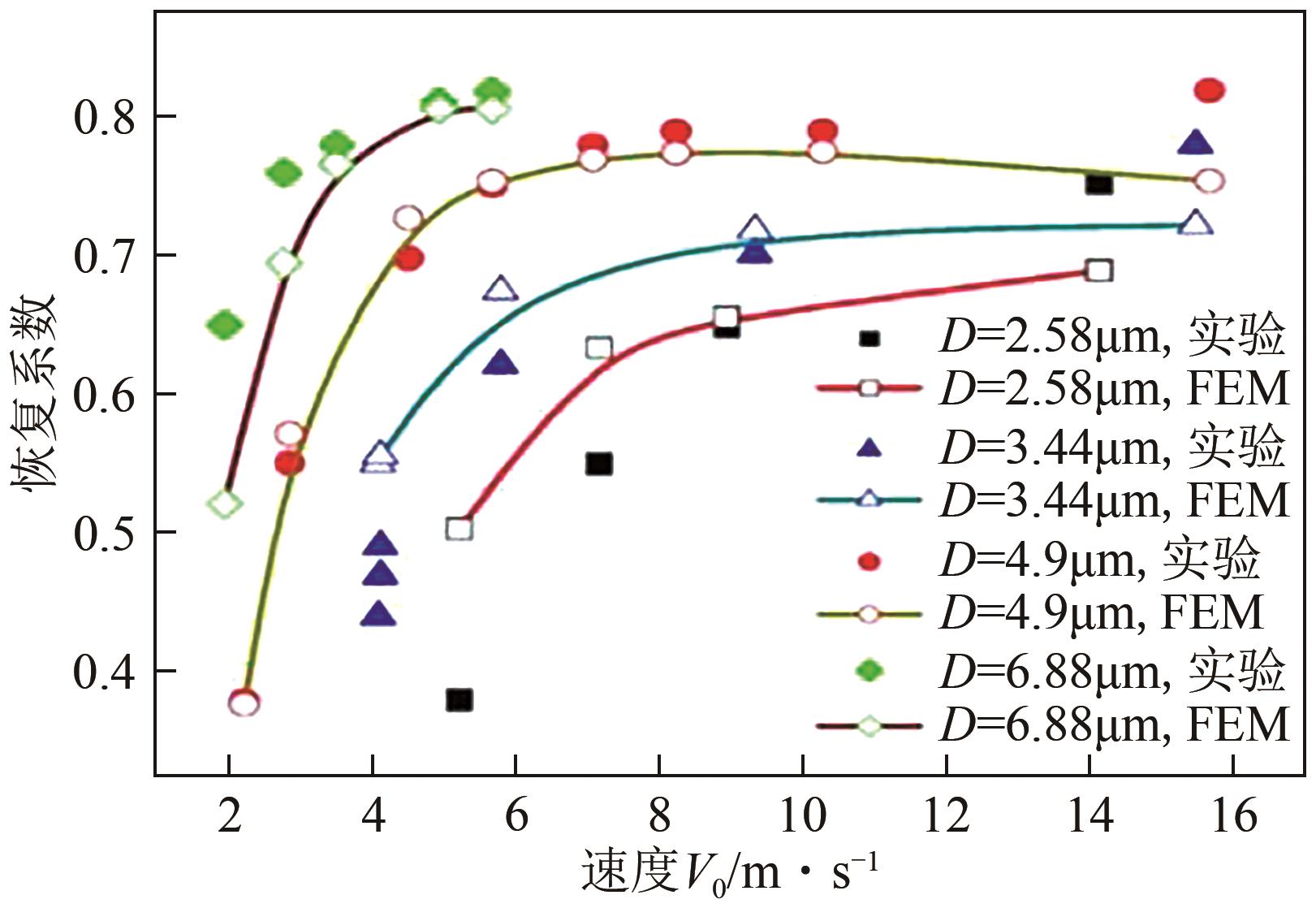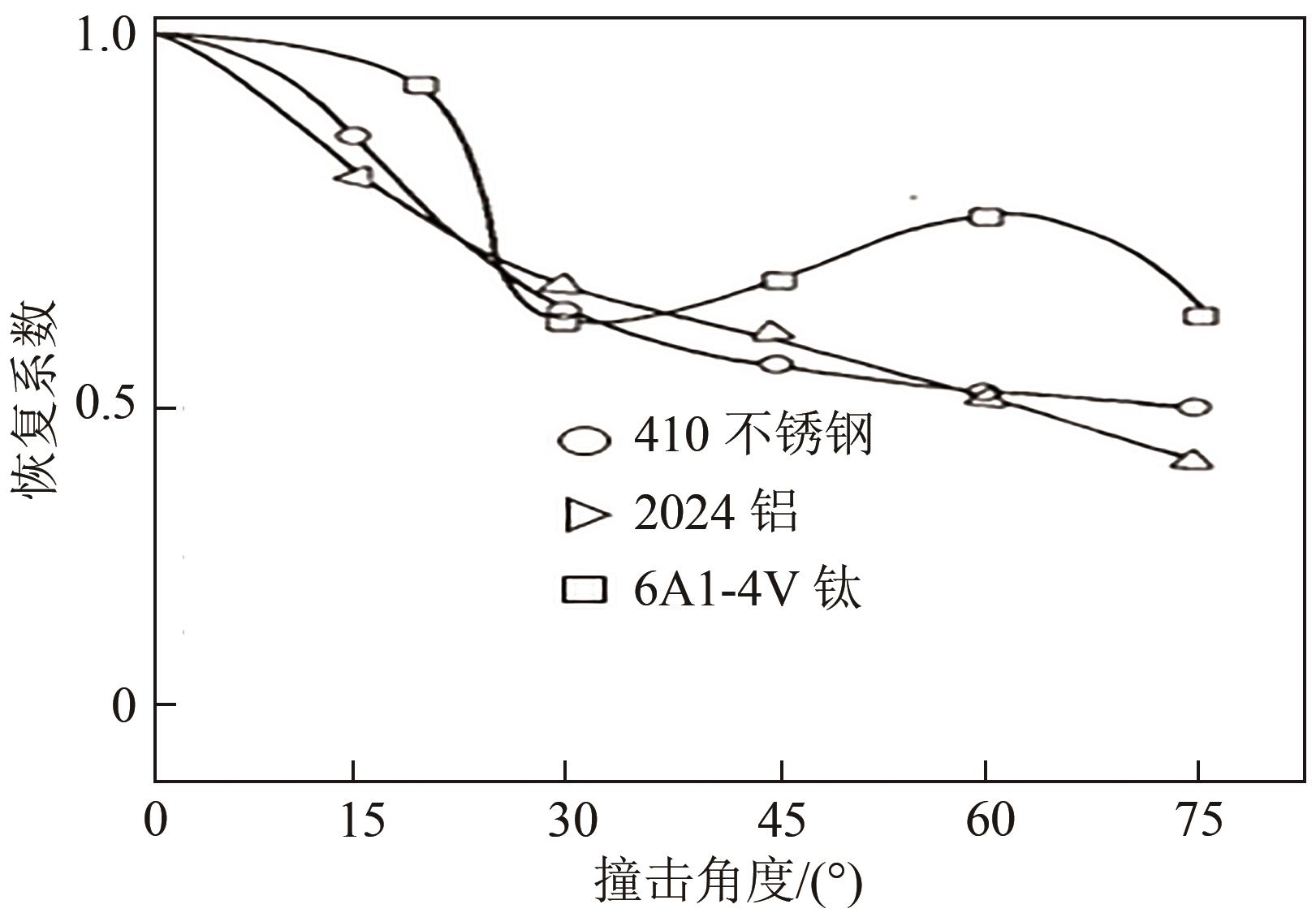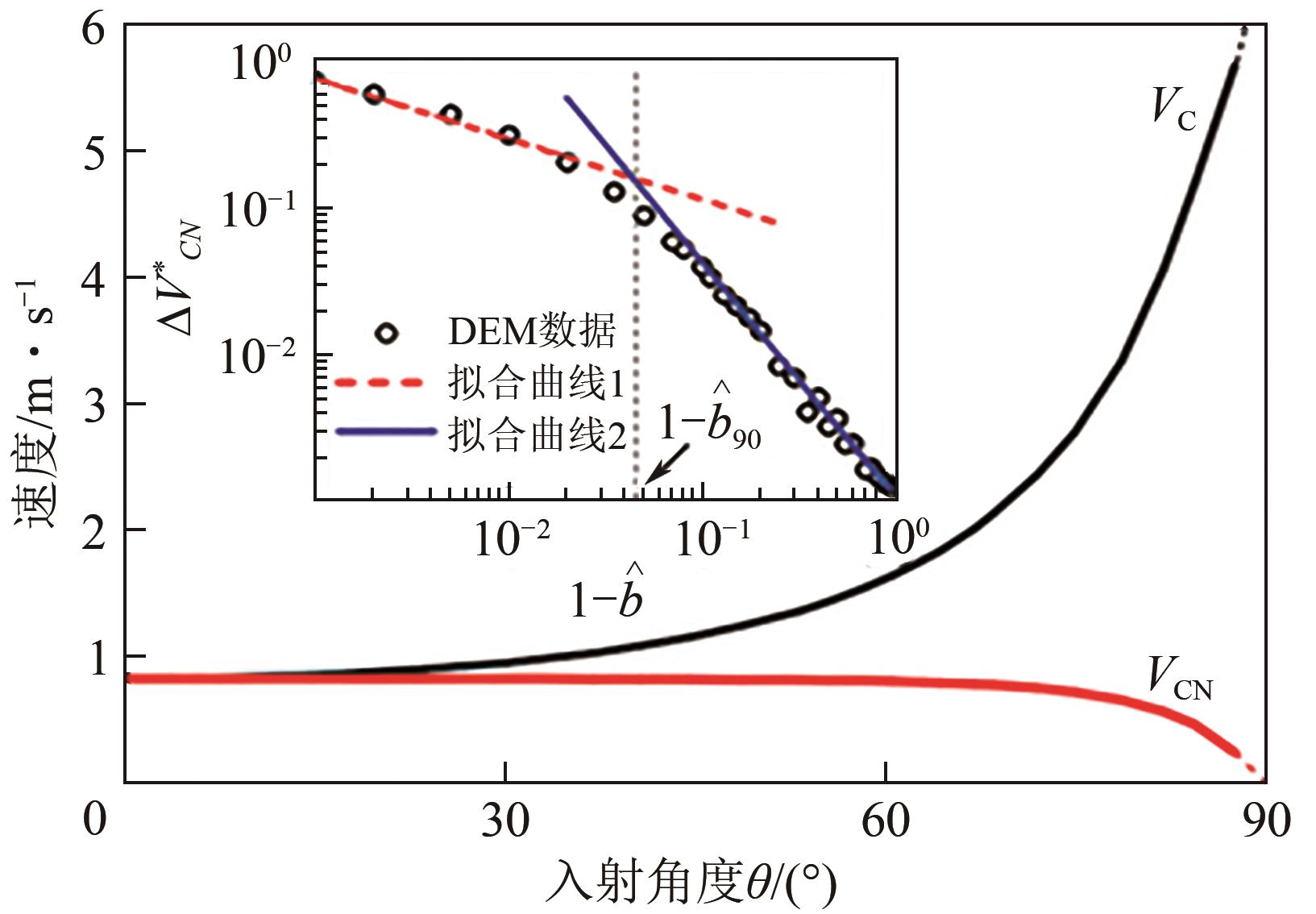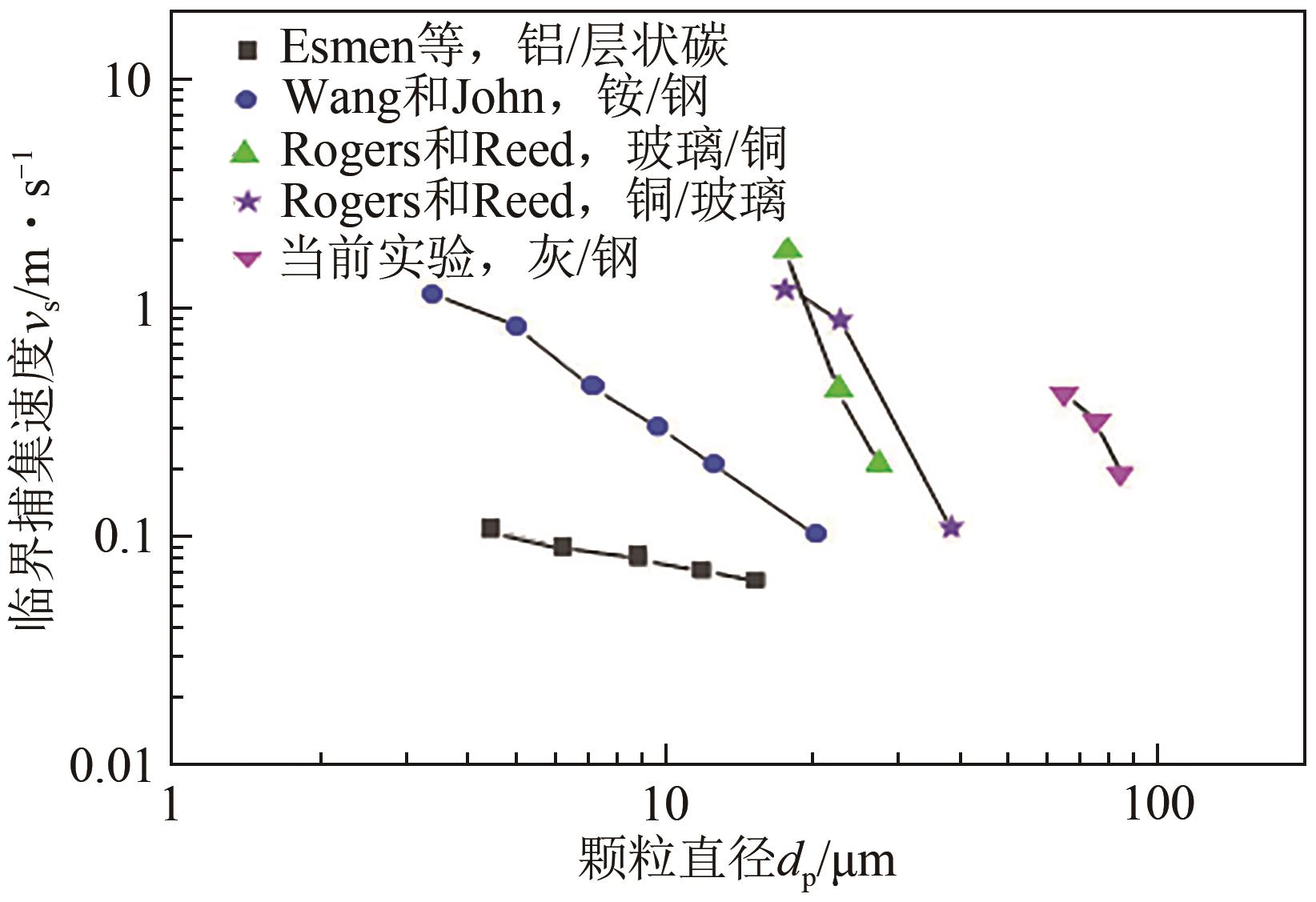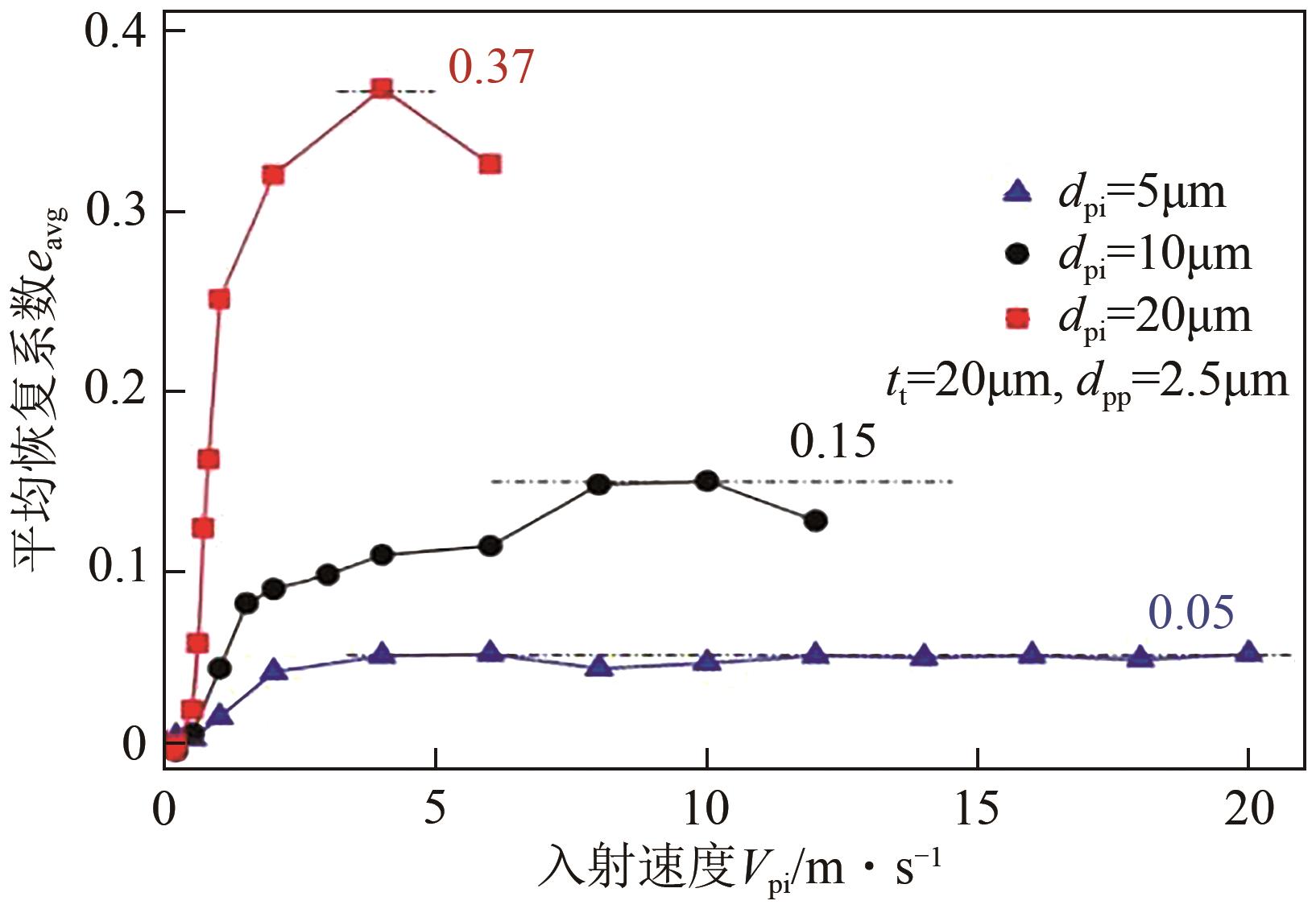Chemical Industry and Engineering Progress ›› 2023, Vol. 42 ›› Issue (12): 6141-6156.DOI: 10.16085/j.issn.1000-6613.2023-0084
• Chemical processes and equipment • Previous Articles
Research progress of critical deposition/stripping standards based on micron-sized particles
SHAO Hongxun( ), XIE Jun(
), XIE Jun( ), GUI Yushuang, LI Rundong
), GUI Yushuang, LI Rundong
- College of Energy and Environment, Shenyang Aerospace University, Shenyang 110136, Liaoning, China
-
Received:2023-01-17Revised:2023-03-13Online:2024-01-08Published:2023-12-25 -
Contact:XIE Jun
基于微米级颗粒临界沉积/剥离标准的研究进展
- 沈阳航空航天大学能源与环境学院,辽宁 沈阳 110136
-
通讯作者:谢俊 -
作者简介:邵宏勋(1998—),男,硕士研究生,研究方向为颗粒动力学。E-mail:shx18838714785@163.com。 -
基金资助:国家自然科学基金青年基金(51906164)
CLC Number:
Cite this article
SHAO Hongxun, XIE Jun, GUI Yushuang, LI Rundong. Research progress of critical deposition/stripping standards based on micron-sized particles[J]. Chemical Industry and Engineering Progress, 2023, 42(12): 6141-6156.
邵宏勋, 谢俊, 桂玉双, 李润东. 基于微米级颗粒临界沉积/剥离标准的研究进展[J]. 化工进展, 2023, 42(12): 6141-6156.
share this article
Add to citation manager EndNote|Ris|BibTeX
URL: https://hgjz.cip.com.cn/EN/10.16085/j.issn.1000-6613.2023-0084
| 成分 | SiO2 | Fe2O3 | Al2O3 | CaO | SO3 | 其他 |
|---|---|---|---|---|---|---|
| 质量分数/% | 62.5712 | 8.9279 | 8.3777 | 7.7296 | 1.1075 | 11.2861 |
| 成分 | SiO2 | Fe2O3 | Al2O3 | CaO | SO3 | 其他 |
|---|---|---|---|---|---|---|
| 质量分数/% | 62.5712 | 8.9279 | 8.3777 | 7.7296 | 1.1075 | 11.2861 |
| 文献作者 | 接触模型 | 颗粒作用类型 | 沉积判据表达式 |
|---|---|---|---|
| Feng等[ | Hertz | 弹性碰撞 (忽略黏附) | |
| Wu等[ | Hertz | 弹性碰撞 塑性变形 | |
Brach和Dunn[ Jassim[ | Hertz 经典碰撞动力学 | 弹性碰撞 表面黏附力 | |
Thornton和 Ning[ 韩健[ | JKR | 弹性碰撞 表面黏附力 | |
| Kim和Dunn[ | JKR | 弹性碰撞 表面黏附力 | |
| Chen等[ | JKR | 黏弹性 滑动阻力、滚动阻力 |
| 文献作者 | 接触模型 | 颗粒作用类型 | 沉积判据表达式 |
|---|---|---|---|
| Feng等[ | Hertz | 弹性碰撞 (忽略黏附) | |
| Wu等[ | Hertz | 弹性碰撞 塑性变形 | |
Brach和Dunn[ Jassim[ | Hertz 经典碰撞动力学 | 弹性碰撞 表面黏附力 | |
Thornton和 Ning[ 韩健[ | JKR | 弹性碰撞 表面黏附力 | |
| Kim和Dunn[ | JKR | 弹性碰撞 表面黏附力 | |
| Chen等[ | JKR | 黏弹性 滑动阻力、滚动阻力 |
| 入射角度 | SD(en) | SD(et) |
|---|---|---|
| 15° | 0.45 | 0.248 |
| 30° | 0.34 | 0.195 |
| 45° | 0.355 | 0.19 |
| 60° | 0.21 | 0.33 |
| 75° | 0.21 | 0.34 |
| 入射角度 | SD(en) | SD(et) |
|---|---|---|
| 15° | 0.45 | 0.248 |
| 30° | 0.34 | 0.195 |
| 45° | 0.355 | 0.19 |
| 60° | 0.21 | 0.33 |
| 75° | 0.21 | 0.34 |
| 文献作者 | 年份 | 颗粒去除依据 | 颗粒去除模型 |
|---|---|---|---|
| Abd-Elhady等[ | 2011 | 临界力矩理论 | |
| Tong等[ | 2017 | 能量守恒定律 临界力矩理论(滚动、滑动脱离) | 临界剪切速度: |
| Tang等[ | 2017 | 能量守恒定律,临界力矩理论 | 临界剪切速度: |
| Zheng等[ | 2021 | 能量守恒定律,临界力矩理论(滚动、滑动脱离) | 临界剪切速度(经验式): |
| 文献作者 | 年份 | 颗粒去除依据 | 颗粒去除模型 |
|---|---|---|---|
| Abd-Elhady等[ | 2011 | 临界力矩理论 | |
| Tong等[ | 2017 | 能量守恒定律 临界力矩理论(滚动、滑动脱离) | 临界剪切速度: |
| Tang等[ | 2017 | 能量守恒定律,临界力矩理论 | 临界剪切速度: |
| Zheng等[ | 2021 | 能量守恒定律,临界力矩理论(滚动、滑动脱离) | 临界剪切速度(经验式): |
| 1 | 肖俊峰, 蔡柳溪, 高松, 等. 燃气透平叶片表面颗粒沉积特性试验研究进展[J]. 工程热物理学报, 2019, 40(7): 1566-1576. |
| XIAO Junfeng, CAI Liuxi, GAO Song, et al. Experimental research progress on the particle deposition characteristics of gas turbine blade surface[J]. Journal of Engineering Thermophysics, 2019, 40(7): 1566-1576. | |
| 2 | CAI Yongtie, YANG Wenming, ZHENG Zhimin, et al. Modelling of ash deposition in biomass boilers: A review[J]. Energy Procedia, 2017, 143: 623-628. |
| 3 | KLEINHANS Ulrich, WIELAND Christoph, FRANDSEN Flemming J, et al. Ash formation and deposition in coal and biomass fired combustion systems: Progress and challenges in the field of ash particle sticking and rebound behavior[J]. Progress in Energy and Combustion Science, 2018, 68: 65-168. |
| 4 | CHEN Sheng, LI Shuiqing, YANG Mengmeng. Sticking/rebound criterion for collisions of small adhesive particles: Effects of impact parameter and particle size[J]. Powder Technology, 2015, 274: 431-440. |
| 5 | ZHANG Yiyang, FANG Zhu, ZHAO Shumiao, et al. An experimental study on the wall collision of micro-sized graphite particles by high-speed photomicrography[J]. Progress in Nuclear Energy, 2020, 125: 103391. |
| 6 | DONG Yunshan, SI Fengqi, JIN Wei, et al. A new soft-particle DEM model of micro-particle impact integrated adhesive, elastoplastic and microslip behaviors[J]. Advanced Powder Technology, 2020, 31(9): 3960-3973. |
| 7 | MU Lin, WANG Shuaitan, ZHAI Zhende, et al. Unsteady CFD simulation on ash particle deposition and removal characteristics in tube banks: Focusing on particle diameter, flow velocity, and temperature[J]. Journal of the Energy Institute, 2020, 93(4): 1481-1494. |
| 8 | FANG Zhu, ZHANG Yiyang, WU Xinxin, et al. New explicit correlations for the critical sticking velocity and restitution coefficient of small adhesive particles: A finite element study and validation[J]. Journal of Aerosol Science, 2022, 160: 105918. |
| 9 | 乔春珍, 纪开, 郝金鑫. 吸附蓄热耦合的室内空气净化系统对颗粒物的净化特性[J]. 建筑科学, 2022, 38(10): 101-107. |
| QIAO Chunzhen, JI Kai, HAO Jinxin. Purification characteristics of particles in indoor air purification system coupled with adsorption and heat storage[J]. Building Science, 2022, 38(10): 101-107. | |
| 10 | 吕超, 柳静献. 高炉除尘灰细微颗粒物单/双预荷电强化滤袋过滤特性[J]. 环境工程学报, 2023, 17(1): 180-187. |
| Chao LYU, LIU Jingxian. Unipolar/bipolar pre-charging enhanced the filtration performance of bag filter for fine particulate matter from blast furnace dust[J]. Chinese Journal of Environmental Engineering, 2023, 17(1): 180-187. | |
| 11 | CHIAVOLA Ornella, CHIATTI Giancarlo, SIRHAN Nidal. Impact of particulate size during deep loading on DPF management[J]. Applied Sciences, 2019, 9(15): 3075. |
| 12 | BAXTER L. Ash deposit formation and deposit properties. A comprehensive summary of research conducted at Sandia's combustion research facility[R]. New Mexico: Sandia National Laboratories, 2000. |
| 13 | CAI Yongtie, Kunlin TAY, ZHENG Zhimin, et al. Modeling of ash formation and deposition processes in coal and biomass fired boilers: A comprehensive review[J]. Applied Energy, 2018, 230: 1447-1544. |
| 14 | GARCÍA PÉREZ Manuel, VAKKILAINEN Esa, Timo HYPPÄNEN. The contribution of differently-sized ash particles to the fouling trends of a pilot-scale coal-fired combustor with an ash deposition CFD model[J]. Fuel, 2017, 189: 120-130. |
| 15 | 伍赫, 郝子晗, 杨星, 等. 颗粒物沉积与平板气膜冷却耦合效应的数值研究[J/OL]. 航空动力学报, 2023: DOI: 10.13224/j.cnki.jasp.20220462. |
| WU He, HAO Zihan, YANG Xing, et al. A numerical study on coupling effects of particle deposition and film cooling over flat plate surfaces[J/OL]. Journal of Aerospace Power, 2023: DOI: 10.13224/j.cnki.jasp.20220462. | |
| 16 | 韩健. 煤灰颗粒与平板表面冷态惯性撞击机理研究[D]. 大连: 大连理工大学, 2013. |
| HAN Jian. Mechanism research on inertial impact process between ash particle and planar surface at normal temperature state[D]. Dalian: Dalian University of Technology, 2013. | |
| 17 | 董云山. 锅炉受热面飞灰磨损-沉积耦合机制研究[D]. 南京: 东南大学, 2021. |
| DONG Yunshan. Study on coupling mechanism of fly-ash erosion and deposition on boiler heating surface[D]. Nanjing: Southeast University, 2021. | |
| 18 | FANG Zhu, ZHANG Yiyang, WEI Mingzhe, et al. A numerical study on adhesive collision between a micro-sized particle and a wall[J]. Powder Technology, 2020, 360: 769-779. |
| 19 | KRIJT S, GÜTTLER C, HEIßELMANN D, et al. Energy dissipation in head-on collisions of spheres[J]. Journal of Physics D: Applied Physics, 2013, 46(43): 435303. |
| 20 | MARSHALL Jeffrey S. Modeling and sensitivity analysis of particle impact with a wall with integrated damping mechanisms[J]. Powder Technology, 2018, 339: 17-24. |
| 21 | 汤明高, 赵欢乐, 毛宇祥. 散粒体斜坡上滚石法向碰撞恢复系数研究[J]. 防灾减灾工程学报, 2023, 43(3): 604-613. |
| TANG Minggao, ZHAO Huanle, MAO Yuxiang. Study on the normal restitution coefficient of rockfall impaction loose granular slope[J]. Journal of Disaster Prevention and Mitigation Engineering, 2023, 43(3): 604-613. | |
| 22 | GOLDSMITH W. Impact: The theory and physical behaviour of colliding solids[M]. London: Edward Arnold. 1960: 352-401. |
| 23 | JOHNSON W, RICE S L. Impact strength of materials[J]. Journal of Applied Mechanics,1974,41(2): 331. |
| 24 | STRONGE W J. Impact mechanics[M]. 2nd ed. Cambridge: Cambridge University Press, 2018. |
| 25 | KOTTAPALLI Kalyan, NOVOSSELOV Igor V. Aerodynamic resuspension and contact removal of energetic particles from smooth, rough, and fibrous surfaces[J]. Talanta, 2021, 231: 122356. |
| 26 | 蔡柳溪, 肖俊峰, 高松, 等. 燃气透平叶片表面颗粒沉积特性数值研究进展[J]. 工程热物理学报, 2020, 41(2): 342-353. |
| CAI Liuxi, XIAO Junfeng, GAO Song, et al. Numerical research progress on the particle deposition characteristics of gas turbine blade surface[J]. Journal of Engineering Thermophysics, 2020, 41(2): 342-353. | |
| 27 | 吕浪. 燃气透平静叶微颗粒碰撞和沉积特性的数值分析[D]. 广州: 华南理工大学, 2018. |
| Lang LYU. Numerical analysis of micro-particle collision and deposition on gas turbine stator blades[D]. Guangzhou: South China University of Technology, 2018. | |
| 28 | BARKER Brett Jordan. Simulation of coal ash deposition on modern turbine nozzle guide vanes[D]. Columbus: The Ohio State University, 2010. |
| 29 | DAHNEKE Barton. The capture of aerosol particles by surfaces[J]. Journal of Colloid and Interface Science, 1971, 37(2): 342-353. |
| 30 | DAHNEKE Barton. Measurements of bouncing of small latex spheres[J]. Journal of Colloid and Interface Science, 1973, 45(3): 584-590. |
| 31 | WALL Stephen, JOHN Walter, WANG Hwa-Chi, et al. Measurements of kinetic energy loss for particles impacting surfaces[J]. Aerosol Science and Technology, 1990, 12(4): 926-946. |
| 32 | DUNN Patrick F, BRACH Raymond M, CAYLOR Michael J. Experiments on the low-velocity impact of microspheres with planar surfaces[J]. Aerosol Science and Technology, 1995, 23(1): 80-95. |
| 33 | DUNN Patrick F, BRACH Raymond M, JANSON Gregory G. Surface-contact mechanics during oblique impact of microspheres with planar surfaces[J]. Aerosol Science and Technology, 1996, 25(4): 445-465. |
| 34 | DAHNEKE Barton. Particle bounce or capture—Search for an adequate theory: I. Conservation-of-energy model for a simple collision process[J]. Aerosol Science and Technology, 1995, 23(1): 25-39. |
| 35 | KORUK H. Development of a model for predicting dynamic response of a sphere at viscoelastic interface: A dynamic Hertz model[J]. IOP Conference Series: Materials Science and Engineering, 2021, 1150(1): 012015. |
| 36 | CHENG W, BRACH R M, DUNN P F. Three-dimensional modeling of microsphere contact/impact with smooth, flat surfaces[J]. Aerosol Science and Technology, 2002, 36(11): 1045-1060. |
| 37 | KIM O V, DUNN P F. A microsphere-surface impact model for implementation in computational fluid dynamics[J]. Journal of Aerosol Science, 2007, 38(5): 532-549. |
| 38 | KIM O V, DUNN P F. Direct visualization and model validation of microsphere impact and surface capture[J]. Journal of Aerosol Science, 2008, 39(4): 373-375. |
| 39 | POPPE Torsten, BLUM Jurgen, HENNING Thomas. Analogous experiments on the stickiness of micron-sized preplanetary dust[J]. The Astrophysical Journal Letters, 2000, 533(1): 454-471. |
| 40 | THORNTON Colin, NING Zemin. A theoretical model for the stick/bounce behaviour of adhesive, elastic-plastic spheres[J]. Powder Technology, 1998, 99(2): 154-162. |
| 41 | Carsten GÜTTLER, Daniel HEIßELMANN, Jürgen BLUM, et al. Normal collisions of spheres: A literature survey on available experiments[EB/OL]. 2012: arXiv: 1204.0001. . |
| 42 | WU Chuanyu, LI Longyuan, THORNTON Colin. Rebound behaviour of spheres for plastic impacts[J]. International Journal of Impact Engineering, 2003, 28(9): 929-946. |
| 43 | FENG Xiqiao, LI Huan, ZHAO Hongping, et al. Numerical simulations of the normal impact of adhesive microparticles with a rigid substrate[J]. Powder Technology, 2009, 189(1): 34-41. |
| 44 | BRACH Raymond M, DUNN Patrick F. A mathematical model of the impact and adhesion of microsphers[J]. Aerosol Science and Technology, 1992, 16(1): 51-64. |
| 45 | JASSIM Esam. Particle entrainment and deposition scenario in sublayer region of variable area conduit[J]. E3S Web of Conferences, 2020, 162: 03006. |
| 46 | DONG Ming, LI Sufen, XIE Jun, et al. Experimental studies on the normal impact of fly ash particles with planar surfaces[J]. Energies, 2013, 6(7): 3245-3262. |
| 47 | 孙奇. 高温环境细颗粒惯性撞击沉积实验研究[D]. 北京: 清华大学, 2013. |
| SUN Qi. Experimental study of fine particle deposition by inertial impaction in high temperature[D]. Beijing: Tsinghua University, 2013. | |
| 48 | LI Xue, DONG Ming, JIANG Dongyue, et al. The effect of surface roughness on normal restitution coefficient, adhesion force and friction coefficient of the particle-wall collision[J]. Powder Technology, 2020, 362: 17-25. |
| 49 | TABAKOFF W, MALAK M F, HAMED A. Laser measurements of solid-particle rebound parameters impacting on 2024 aluminum and 6A1-4V titanium alloys[J]. AIAA Journal, 1987, 25(5): 721-726. |
| 50 | CAI Liuxi, WANG Shunsen, LI Yun, et al. Experimental and numerical studies on rebound characteristics of non-spherical particles impacting on stainless-steel at high temperature[J]. Powder Technology, 2021, 381: 110-121. |
| 51 | DOMINIK C, TIELENS A G G M. The physics of dust coagulation and the structure of dust aggregates in space[J]. The Astrophysical Journal Letters, 1997, 480(2): 647-673. |
| 52 | XIE Jun, ZHU Zhengren, YANG Tianhua, et al. The effect of incident angle on the rebound behavior of micro-particle impacts[J]. Journal of Aerosol Science, 2021, 155: 105778. |
| 53 | DONG Ming, HAN Jian, LI Sufen, et al. A dynamic model for the normal impact of fly ash particle with a planar surface[J]. Energies, 2013, 6(8): 4288-4307. |
| 54 | XIE Jun, MA Haodong, LI Chenxi, et al. The critical capture velocity of coal ash particles oblique impact on a stainless steel surface[J]. Energies, 2021, 14(17): 5231. |
| 55 | ANTYPOV Dmytro, ELLIOTT James A, HANCOCK Bruno C. Effect of particle size on energy dissipation in viscoelastic granular collisions[J]. Physical Review E, 2011, 84(2): 021303. |
| 56 | 江平, 高德东, 孟广双, 等. 荒漠地区太阳能电池板表面灰尘黏附接触力学分析[J]. 可再生能源, 2018, 36(8): 1144-1150. |
| JIANG Ping, GAO Dedong, MENG Guangshuang, et al. Contact mechanics analysis of dust adhesion on solar panels in desert area[J]. Renewable Energy Resources, 2018, 36(8): 1144-1150. | |
| 57 | 季浪宇. 大颗粒固液两相流碰撞反弹规律及磨损特性研究[D]. 杭州: 浙江理工大学, 2017. |
| JI Langyu. Study on the collision rule and erosion characteristic of solid-liquid two-phase flow with large particle diameter[D]. Hangzhou: Zhejiang Sci-Tech University, 2017. | |
| 58 | SOMMERFELD M, HUBER N. Experimental analysis and modelling of particle-wall collisions[J]. International Journal of Multiphase Flow, 1999, 25(6/7): 1457-1489. |
| 59 | ROGERS L N, REED J. The adhesion of particles undergoing an elastic-plastic impact with a surface[J]. Journal of Physics D: Applied Physics, 1984, 17(4): 677-689. |
| 60 | ZHU Runru, LI Gengda, ZHANG Yiyang, et al. Effect of powdery layer coverage on the sticking and rebound behaviors of ash particle impaction: A DEM study[J]. Powder Technology, 2021, 382: 388-397. |
| 61 | GILARDI G, SHARF I. Literature survey of contact dynamics modelling[J]. Mechanism and Machine Theory, 2002, 37(10): 1213-1239. |
| 62 | BARTZ Sean P. Gravity effects in mass-spring-damper models of inelastic collisions[J]. European Journal of Physics, 2023, 44(2): 025003. |
| 63 | ZHANG Lin, YIN Xiaochun, YANG Jun, et al. Transient impact response analysis of an elastic-plastic beam[J]. Applied Mathematical Modelling, 2018, 55: 616-636. |
| 64 | JACKSON Robert L, GREEN Itzhak. A finite element study of elasto-plastic hemispherical contact against a rigid flat[J]. Journal of Tribology, 2005, 127(2): 343-354. |
| 65 | YU Kuahai, TAFTI Danesh. Impact model for micrometer-sized sand particles[J]. Powder Technology, 2016, 294: 11-21. |
| 66 | 陈自勇, 程旻, 廖强, 等. 燃煤锅炉烟气侧换热表面的积灰机制及影响因素[J]. 中国电机工程学报, 2019, 39(5): 1349-1366. |
| CHEN Ziyong, CHENG Min, LIAO Qiang, et al. A review on ash deposition on heat exchanger surface in coal-fired boilers: Mechanisms and influence factors[J]. Proceedings of the CSEE, 2019, 39(5): 1349-1366. | |
| 67 | 董云山, 司风琪, 金炜. 考虑温度效应的灰颗粒碰撞模型及沉积行为预测[J]. 中国电机工程学报, 2021, 41(21): 7370-7378. |
| DONG Yunshan, SI Fengqi, JIN Wei. Ash particle collision model and deposition behavior prediction considering temperature effect[J]. Proceedings of the CSEE, 2021, 41(21): 7370-7378. | |
| 68 | AI Weiguo. Deposition of particulate from coal-derived syngas on gas turbine blades near film cooling holes[D]. Provo: Brigham Young University, 2009. |
| 69 | AI Weiguo, FLETCHER Thomas H. Computational analysis of conjugate heat transfer and particulate deposition on a high pressure turbine vane[J]. Journal of Turbomachinery, 2012, 134(4): 041020. |
| 70 | Hesham EL-BATSH, HASELBACHER Hermann. Numerical investigation of the effect of ash particle deposition on the flow field through turbine cascades[C]//Proceedings of ASME Turbo Expo 2002: Power for Land, Sea, and Air, June 3-6, 2002, Amsterdam, The Netherlands. 2009: 1035-1043. |
| 71 | SREEDHARAN SAI S, TAFTI DANESH K. Composition dependent model for the prediction of syngas ash deposition with application to a leading edge turbine vane[C]//Proceedings of ASME Turbo Expo 2010: Power for Land, Sea, and Air, June 14-18, 2010, Glasgow, UK. 2010: 615-626. |
| 72 | N'DALA I, CAMBIER F, ANSEAU M R, et al. Viscosity of liquid feldspars. I: Viscosity measurements[J]. Transactions and Journal of the British Ceramic Society, 1984, 83(4): 105-107. |
| 73 | BARKER B, CASADAY B, SHANKARA P, et al. Coal ash deposition on nozzle guide vanes—Part II: Computational modeling[J]. Journal of Turbomachinery, 2013, 135(1): 011015. |
| 74 | 裴钰. 燃气轮机涡轮叶片表面污染物沉积模型研究[D]. 天津: 中国民航大学, 2016. |
| PEI Yu. Research of deposition model on blade surface of gas turbine[D]. Tianjin: Civil Aviation University of China, 2016. | |
| 75 | ABD-ELHADY M S, RINDT C C M, WIJERS J G, et al. Particulate fouling in waste incinerators as influenced by the critical sticking velocity and layer porosity[J]. Energy, 2005, 30(8): 1469-1479. |
| 76 | Kjell STRANDSTRÖM, MUELLER Christian, HUPA Mikko. Development of an ash particle deposition model considering build-up and removal mechanisms[J]. Fuel Processing Technology, 2007, 88(11/12): 1053-1060. |
| 77 | GONG Yan, YU Guangsuo, GUO Qinghua, et al. Experimental study of the particle deposition characteristics in an entrained flow gasifier[J]. Chemical Engineering Science, 2015, 138: 291-302. |
| 78 | 胡英琦. 粒子特性对涡轮叶片表面沉积的影响研究[D]. 天津: 中国民航大学, 2020. |
| HU Yingqi. Study on the effect of particle characteristics on the surface deposition of turbine blades[D]. Tianjin: Civil Aviation University of China, 2020. | |
| 79 | AHMADI Goodarz, GUO Shiguang, ZHANG Xinyu. Particle adhesion and detachment in turbulent flows including capillary forces[J]. Particulate Science and Technology, 2007, 25(1): 59-76. |
| 80 | ABD-ELHADY M S, ZORNEK T, MALAYERI M R, et al. Influence of gas velocity on particulate fouling of exhaust gas recirculation coolers[J]. International Journal of Heat and Mass Transfer, 2011, 54(4): 838-846. |
| 81 | ZHANG Fan, BUSNAINA Ahmed A, FURY Michael A, et al. The removal of deformed submicron particles from silicon wafers by spin rinse and megasonics[J]. Journal of Electronic Materials, 2000, 29(2): 199-204. |
| 82 | ABD-ELHADY M S, ABD-ELHADY S, RINDT C C M, et al. Removal of gas-side particulate fouling layers by foreign particles as a function of flow direction[J]. Applied Thermal Engineering, 2009, 29(11/12): 2335-2343. |
| 83 | TANG Songzhen, WANG Feilong, REN Qinlong, et al. Fouling characteristics analysis and morphology prediction of heat exchangers with a particulate fouling model considering deposition and removal mechanisms[J]. Fuel, 2017, 203: 725-738. |
| 84 | TANG Songzhen, HE Yaling, WANG Feilong, et al. Parametric study on fouling mechanism and heat transfer characteristics of tube bundle heat exchangers for reducing fouling considering the deposition and removal mechanisms[J]. Fuel, 2018, 211: 301-311. |
| 85 | TONG Zixiang, LI Mingjia, HE Yaling, et al. Simulation of real time particle deposition and removal processes on tubes by coupled numerical method[J]. Applied Energy, 2017, 185: 2181-2193. |
| 86 | TOSCANO Christopher, AHMADI Goodarz. Particle removal mechanisms in cryogenic surface cleaning[J]. The Journal of Adhesion, 2003, 79(2): 175-201. |
| 87 | ZHENG Zhimin, YANG Wenming, CAI Yongtie, et al. Dynamic simulation on ash deposition and heat transfer behavior on a staggered tube bundle under high-temperature conditions[J]. Energy, 2020, 190: 116390. |
| 88 | ZHENG Zhimin, YANG Wenming, WANG Hui, et al. Development of a mechanistic fouling model for predicting deposit formation in a woodchip-fired grate boiler[J]. Energy, 2021, 220: 119699. |
| 89 | SIDDHARTH Rajupet, MAMADOU Sow, LACKS Daniel J. Particle adhesion to rough surfaces[J]. Physical Review E, 2020, 102(1): 012904. |
| 90 | 杨晓军, 胡英琦, 徐致远, 等. 存在剥离条件下颗粒物沉积过程的数值研究和实验验证[J]. 推进技术, 2019, 40(7): 1523-1535. |
| YANG Xiaojun, HU Yingqi, XU Zhiyuan, et al. Experimental validation and numerical simulation of particles depositional processes with detachment[J]. Journal of Propulsion Technology, 2019, 40(7): 1523-1535. | |
| 91 | YOU Shenglong. Numerical modeling of recovery boiler deposit removal under sootblower jet impingement[D]. Toronto: University of Toronto, 2020. |
| [1] | XIE Jun, LI Chenxi, ZHU Zhengren, MA Haodong, LI Rundong. Numerical study on particle impacting single particle powdery layer [J]. Chemical Industry and Engineering Progress, 2021, 40(12): 6490-6498. |
| Viewed | ||||||
|
Full text |
|
|||||
|
Abstract |
|
|||||




